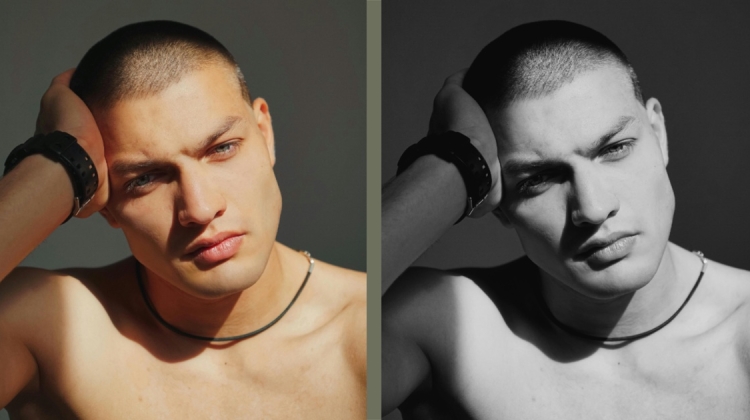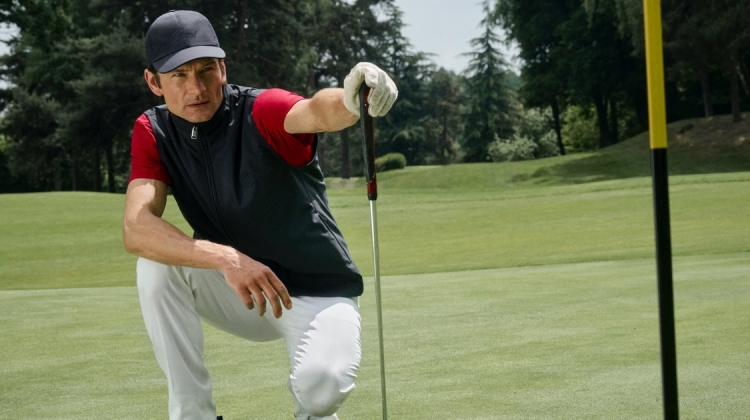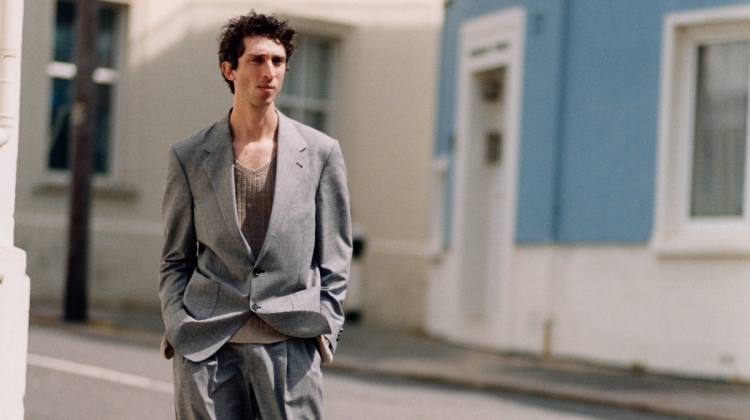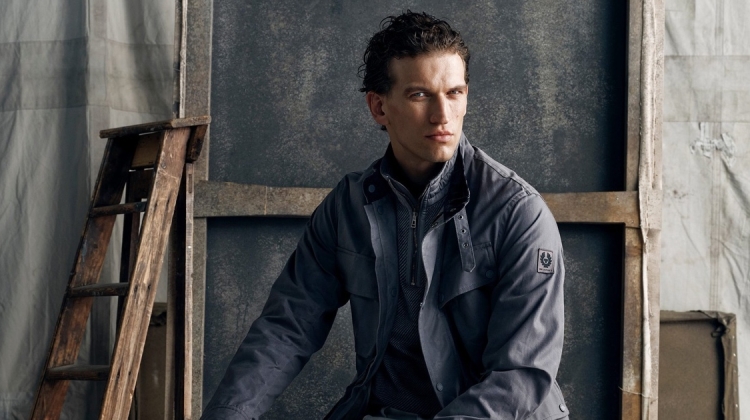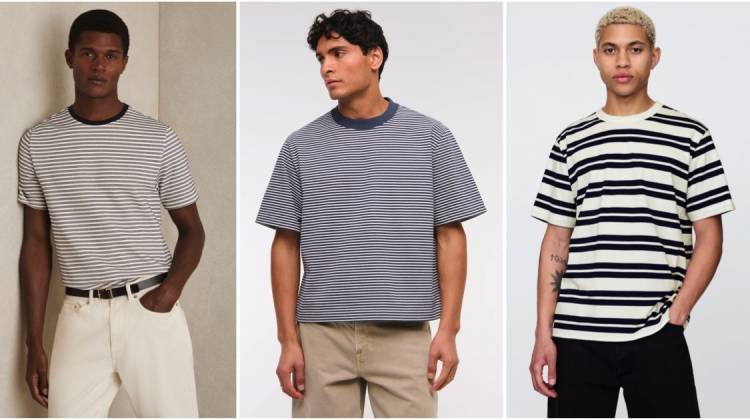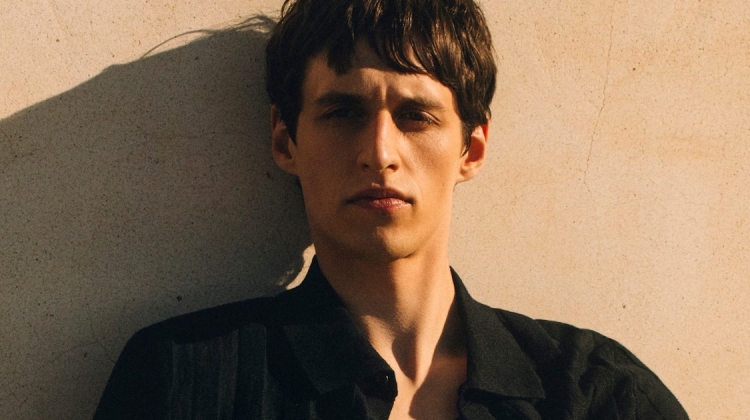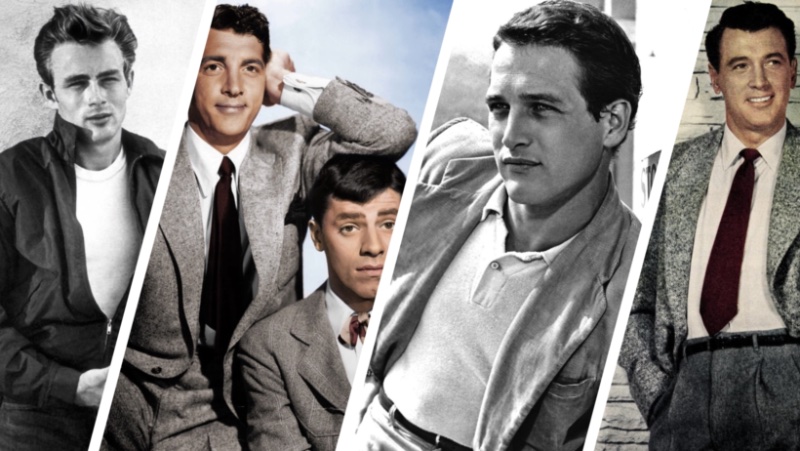
The 1950s was a transformative decade in men’s fashion, providing a rich tapestry of styles, designs, and cultural influences. It brought together a diverse range of elements—from the traditionalism of post-war fashion to the rebellious spirit of rock and roll, from the elegance of cinema icons to the bold flair of music legends.
1950s Fashion for Men: A Paradigm Shift
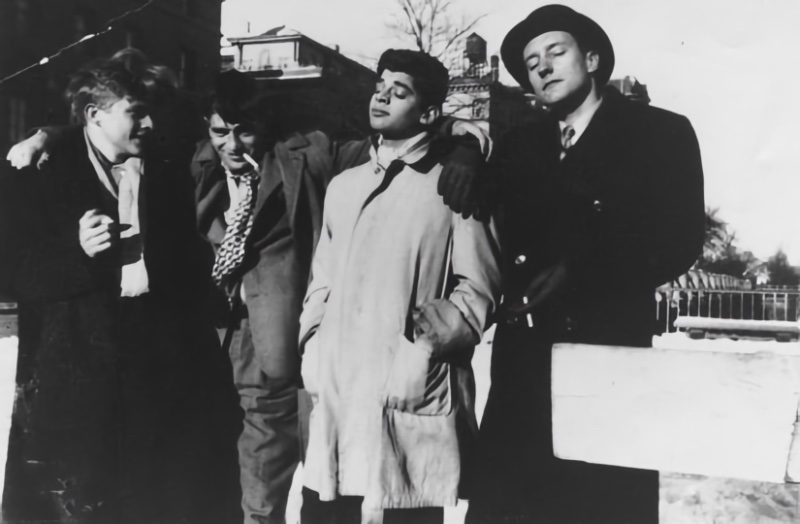
The aftermath of the Second World War brought about a shift in men’s attire as the need for more practical and casual clothing became apparent. This introduced sports jackets, casual shirts, and the iconic leather jacket paired with a white T-shirt—a look popularized by films of the era.
The rise of rock and roll music further fueled the adoption of rebellious fashion, with greased-back hair, jeans, and leather jackets becoming symbols of youthful rebellion. Simultaneously, the Beat Generation, led by figures like Jack Kerouac, embraced a different aesthetic.
They favored a more intellectual and bohemian style, often opting for turtlenecks, berets, and tailored suits. These counter-cultural fashion choices challenged the norms of the time and added diversity to the fashion landscape.
The Influence of Media & Films
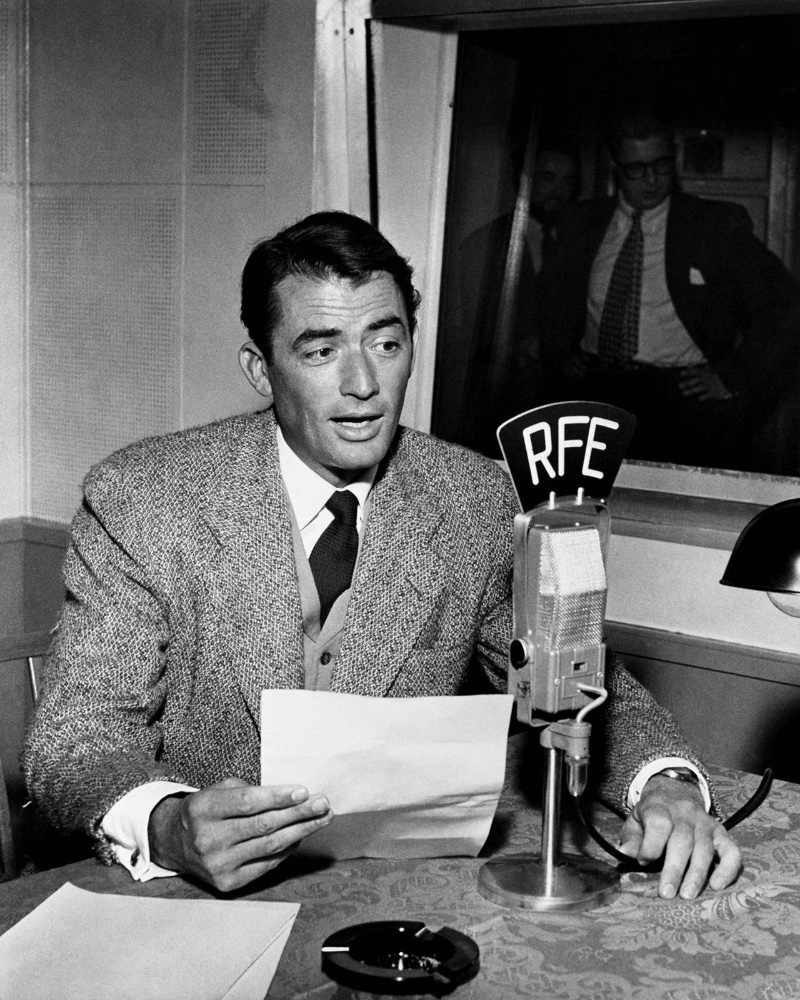
The influence of media, particularly film, on cultural norms and trends has always been potent, but its impact on men’s fashion in the 1950s was uniquely pronounced. During this period, the silver screen functioned as a powerful window to glamour, style, and class, showcasing fashionable trends that quickly found their way into mainstream clothing trends.
Notable figures such as Cary Grant, Gregory Peck, and Rock Hudson, among others, were significant style icons of the period. They created a ripple effect in the clothing industry by donning stylish suits, tuxedos, and unique casual styles in their influential roles.
The outfits worn by these icons weren’t simply costumes but played an integral part in character development and storytelling, further solidifying their appeal and prominence in popular culture.
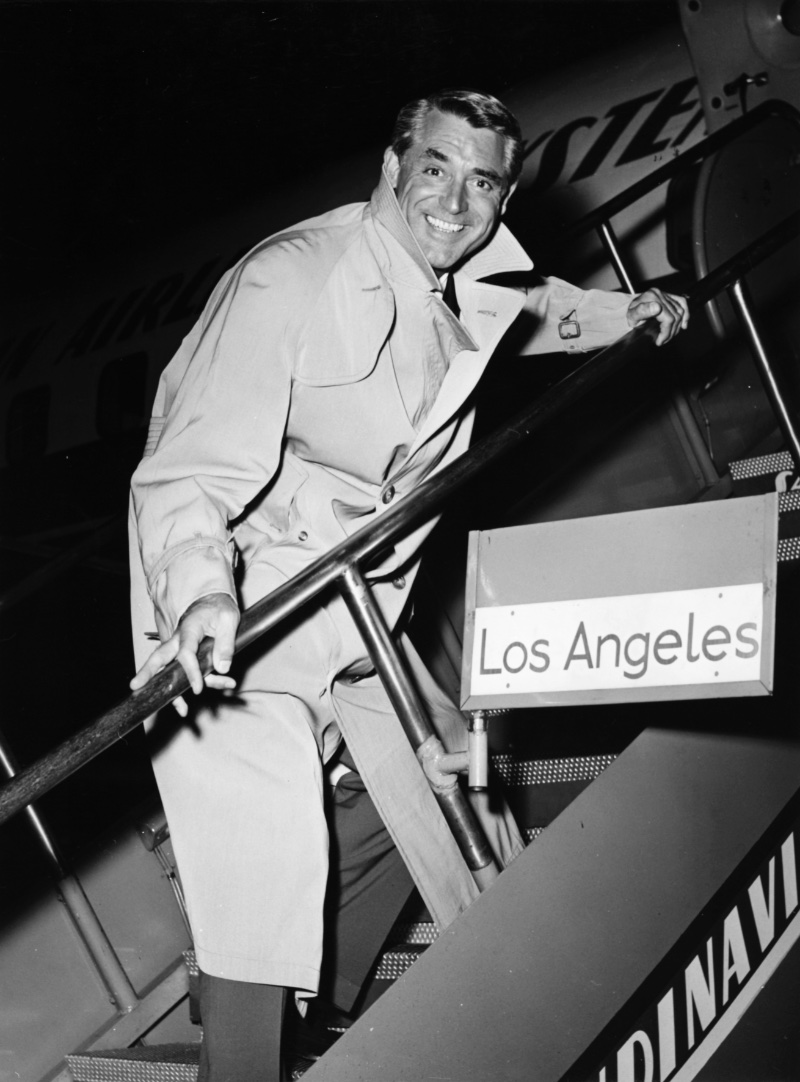
With their on-screen charm and compelling roles, these influential actors commanded a broad audience, thereby profoundly impacting the societal perspective of men’s style. As the film industry reached its golden age, movies’ accessibility and prevalence contributed significantly to the widespread adoption of these fashion trends.
Society looked up to these men as symbols of sophistication, masculinity, and success, and many sought to emulate their styles in their own lives. The attire of these celebrities wasn’t merely a personal style statement; it resonated with the cultural shift towards a more individualistic and expressive society.
This era exemplifies the symbiotic relationship between fashion and media, demonstrating how cinematic representation can lead to cultural transformation, particularly in style and fashion.
Popular Styles & Outfits
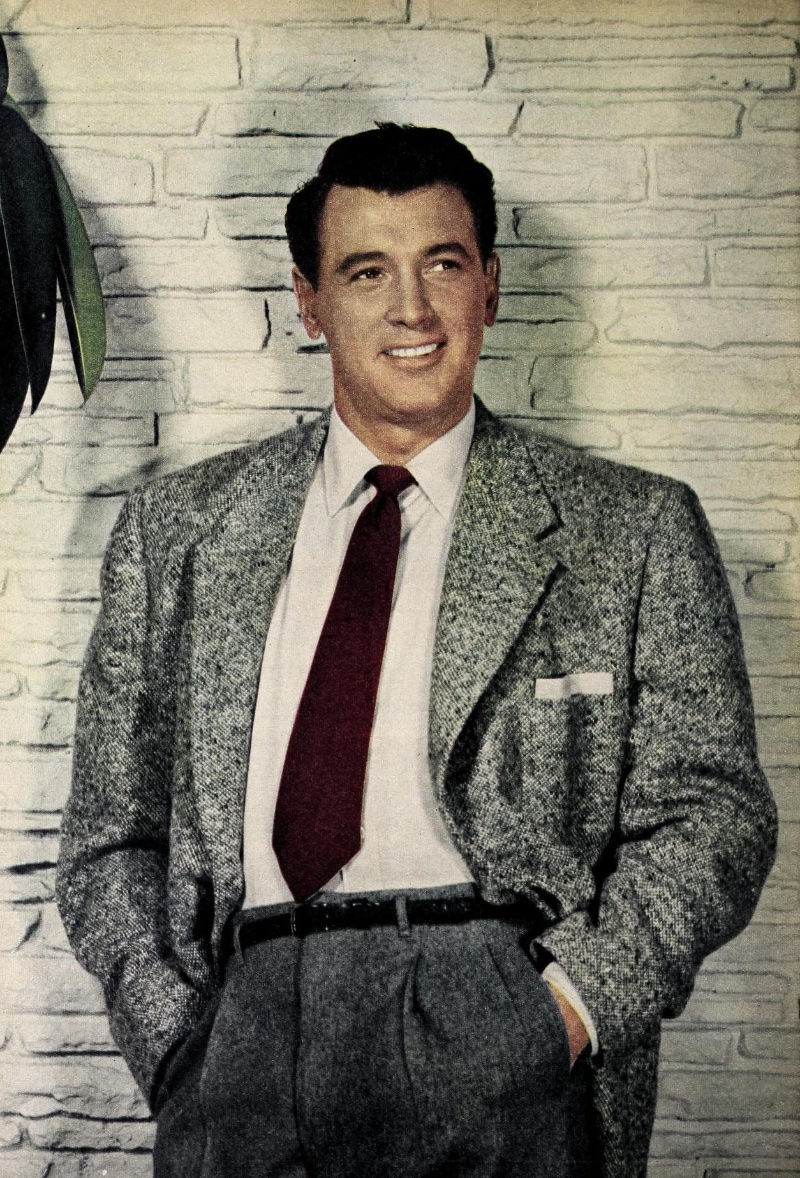
The 1950s witnessed a variety of styles and outfits that left a lasting impact on men’s fashion. The era transitioned from double-breasted jackets to single-breasted and suit jackets, reflecting a more streamlined and modern aesthetic.
Three-piece and business suits remained a staple for formal occasions, while casual wear gained traction with the popularity of polo shirts and button-down shirts.
Color played a significant role in defining ’50s fashion. Dark blue and dark brown were popular choices for suits, exuding sophistication and elegance. Bright colors, on the other hand, were embraced by younger individuals looking to make a bold statement.
Trousers also transformed during this time. Boxy jeans became a go-to for younger men, while gray slacks and khaki pants were favored for more formal occasions. Accessories such as bow ties, fedora hats, penny loafers, and pocket squares added a touch of personality and refinement to outfits.
Common Fabrics & Materials
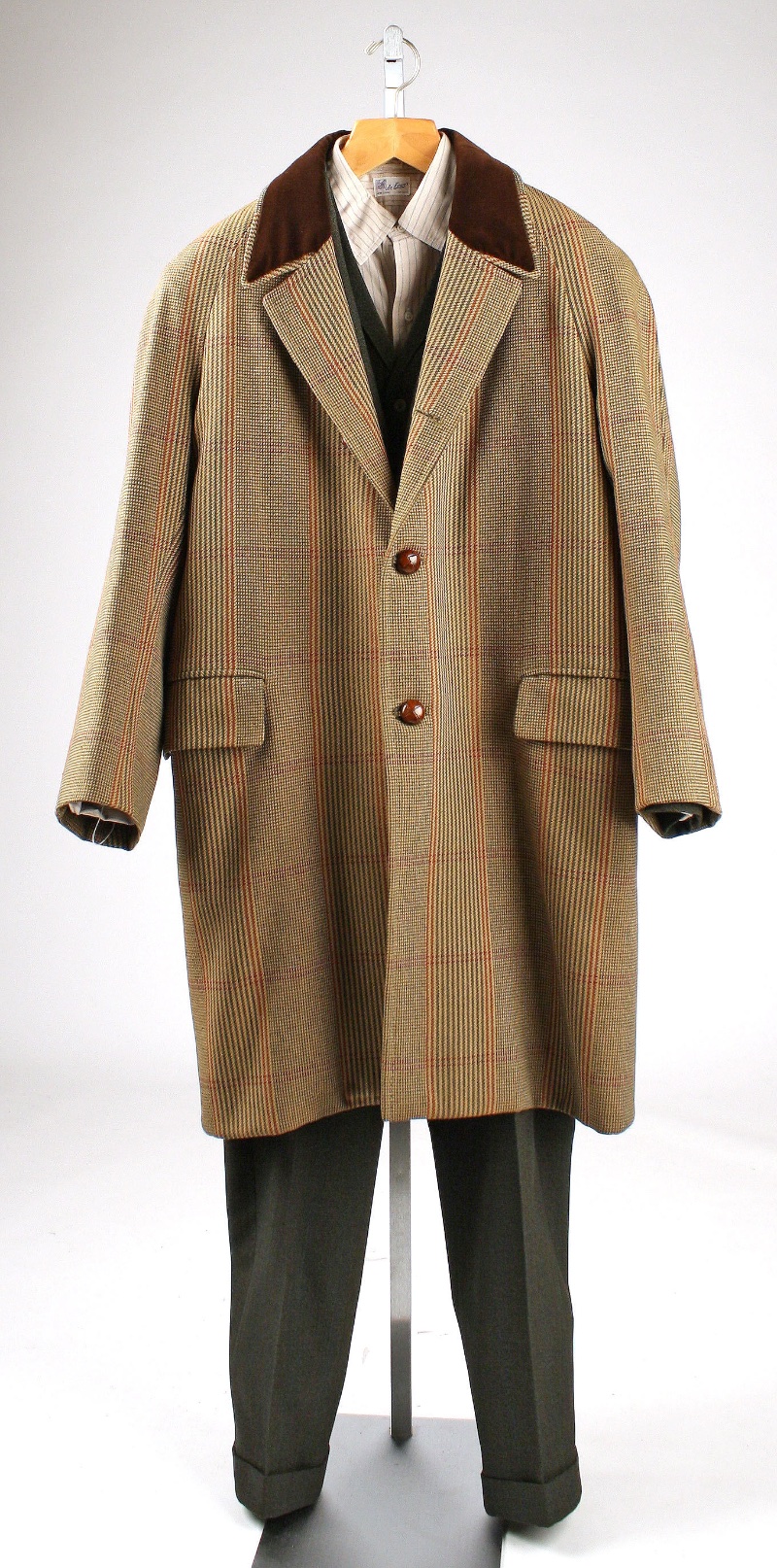
During the 1950s, various fabrics and materials found favor in men’s fashion. One of the mainstays was wool, primarily used in crafting suits due to its durability, warmth, and luxurious feel. Cotton, a versatile and comfortable fabric, was the go-to material for casual shirts, underscoring its ease of use and practicality.
Conversely, denim rose to prominence as the fabric of choice for jeans and casual wear. Denim not only boasted robustness and durability but also symbolized the rugged, practical nature emblematic of the American worker.
Manufacturing & Distribution Advancements
The 1950s witnessed significant strides in manufacturing and distribution methodologies. The era was particularly notable for the rise of ready-to-wear clothing, a shift that made fashionable outfits easily accessible and affordable for the average man.
This democratization of fashion was instrumental in shaping the decade’s fashion trends, as more men could readily engage with and follow the latest styles.
Fashion Icons & Their Impact
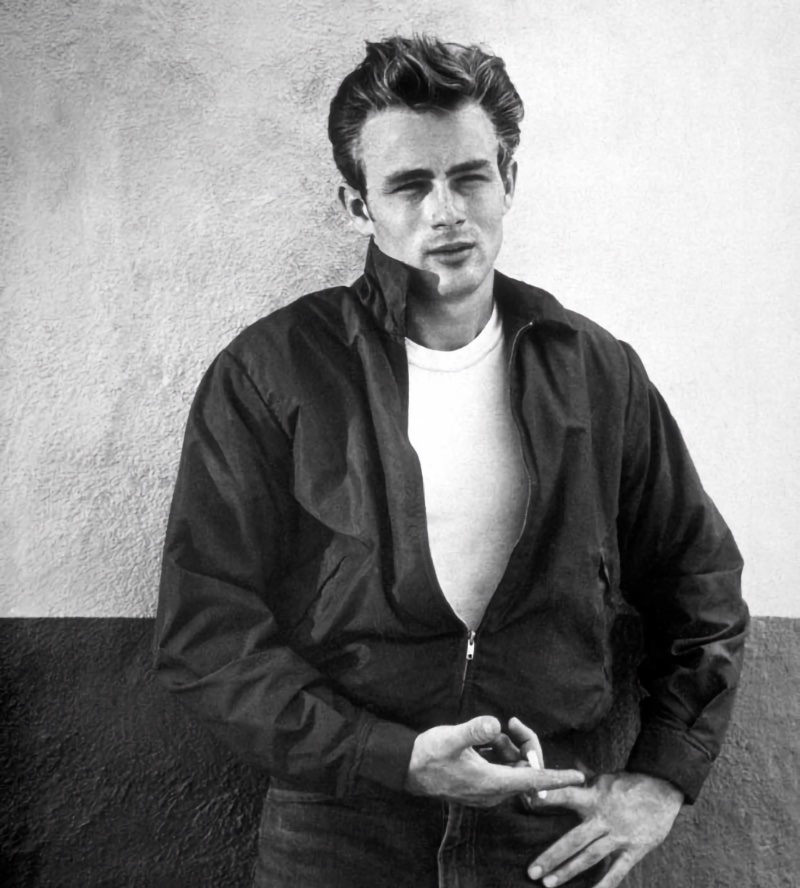
In discussing 1950s men’s fashion, one cannot overlook the impact that certain iconic actors made in popularizing specific styles, thanks to the legendary characters they portrayed in film and music.
James Dean, who immortalized the rebellious youth in Rebel Without a Cause, set the trend with his laid-back ensemble featuring a simple white t-shirt and iconic red windbreaker jacket. This look became the very embodiment of a cool, nonchalant style that still resonates today.
Marlon Brando, another cultural icon of the time, embraced the trend of casual clothing. His portrayal of the rough-and-tumble Johnny Strabler in The Wild One cemented the image of the black motorcycle jacket in the cultural psyche, making it a symbol of the daring, rebellious spirit.
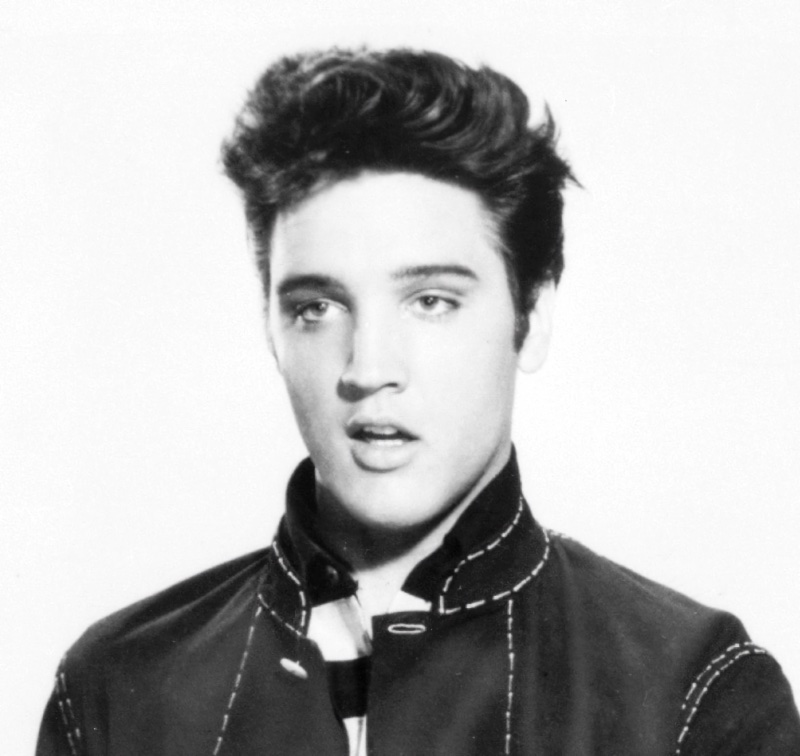
Music legend Elvis Presley also substantially shaped men’s fashion during this era. Known for his flamboyant stage outfits, such as high collars, bedazzled jumpsuits, and slick pompadour hairstyles, Presley brought an audacious flair to men’s attire, demonstrating that men’s fashion could be both adventurous and expressive.
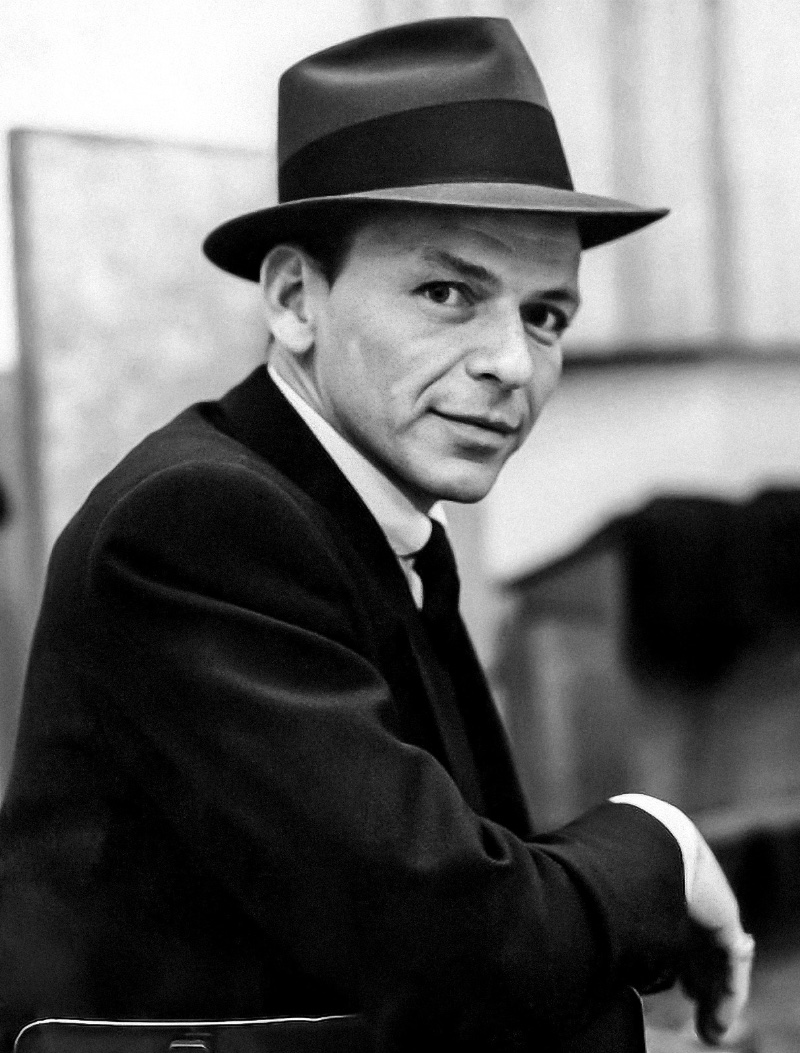
Frank Sinatra embodied timeless elegance with his impeccably tailored business suits and attention to detail. His influence on dress codes and formal wear remains influential to this day.
Dean Martin’s classic suit and tie look epitomized the sophisticated gentleman, while Steve McQueen popularized casual and athletic wear with his confident and effortless style.
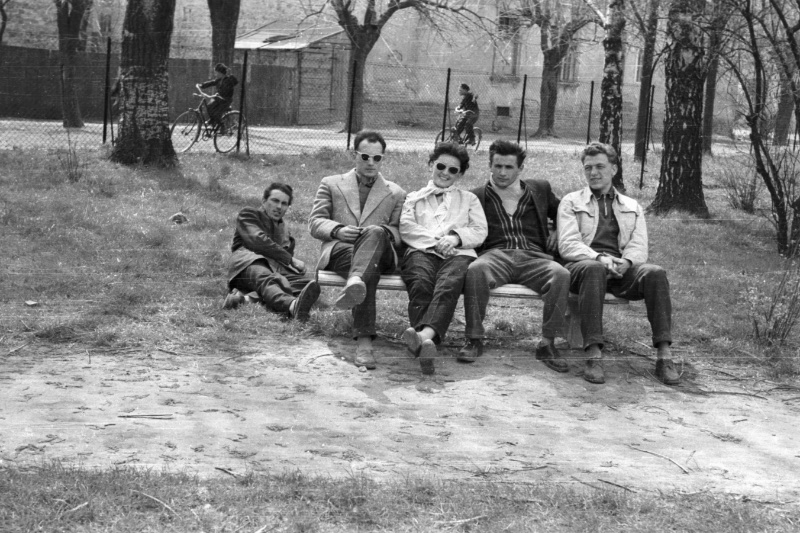
In addition to these icons, the ‘Teddy Boys’ emerged as a subculture in the late 1950s, leaving their mark on younger men’s fashion. With their drape jackets, drainpipe trousers, and flashy accessories, they rebelled against conservative fashion norms and embraced a more extravagant aesthetic.
Through the Lens of Age & Body Types
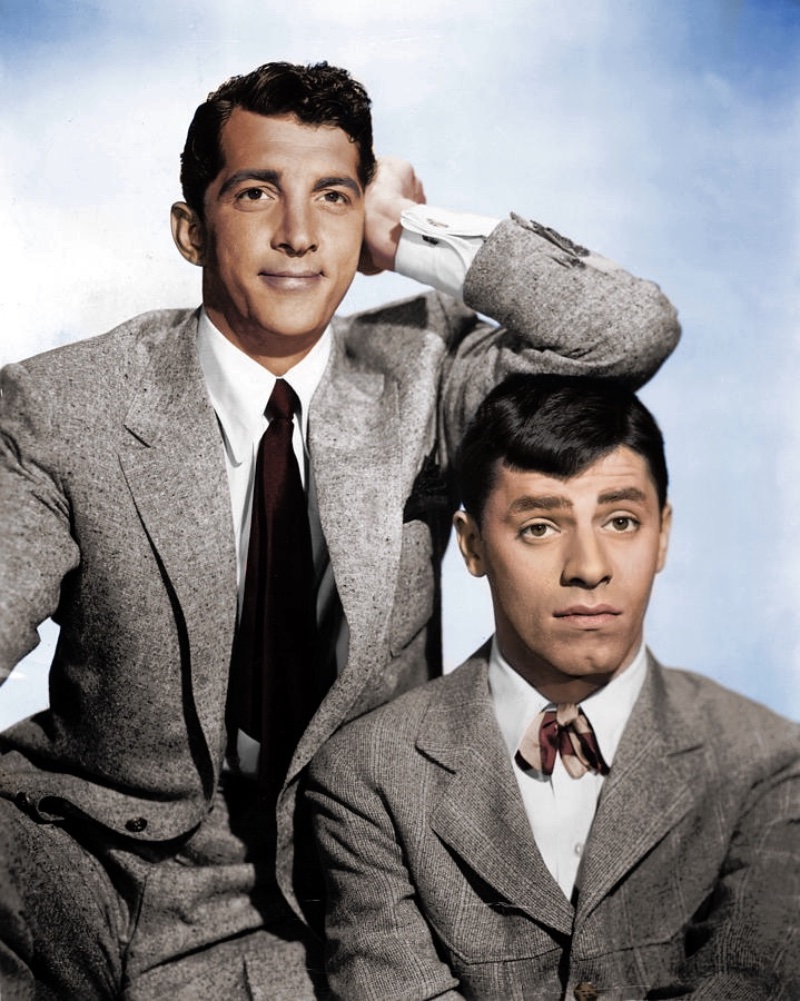
Fashion preferences in the 1950s varied among different age groups and body types. Older men favored more formal attire, such as tailored suits and conservative styles.
Business suits were the go-to choice for professional settings, exuding confidence and professionalism. On the other hand, younger men embraced the casual and rebellious fashion trends that were popularized.
They gravitated towards jeans, leather jackets, and more relaxed styles. Body type also played a role in determining the ideal fit and silhouette.
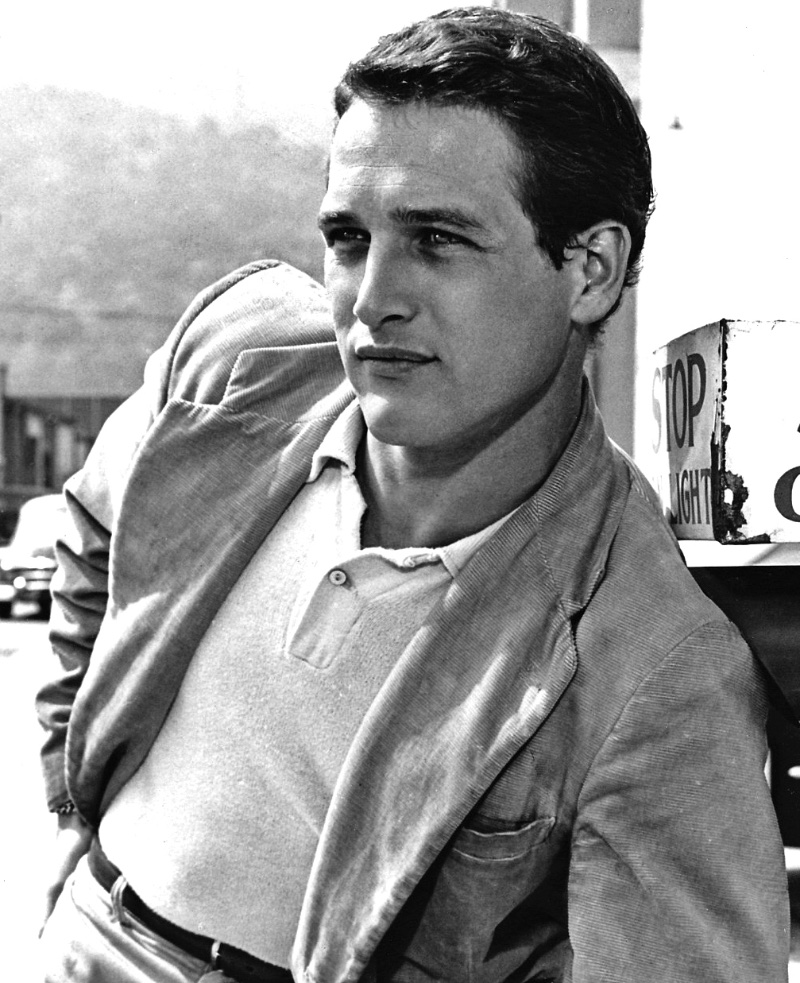
Slimmer individuals found success with slim-cut jeans and tailored clothing, accentuating their lean physiques. Meanwhile, those with a larger build sought comfort in looser-fitting garments and relaxed cuts.
The 1950s offered a range of style options for special events. Black tie events required tuxedos and bow ties, allowing men to showcase their refined taste and sophistication.
Casual gatherings provided the opportunity to experiment with colorful casual shirts, polo shirts, and accessories like fedora hats and pocket squares. A well-tailored suit with a crisp white dress shirt epitomized sartorial excellence in professional settings.
Fashion & Social Change
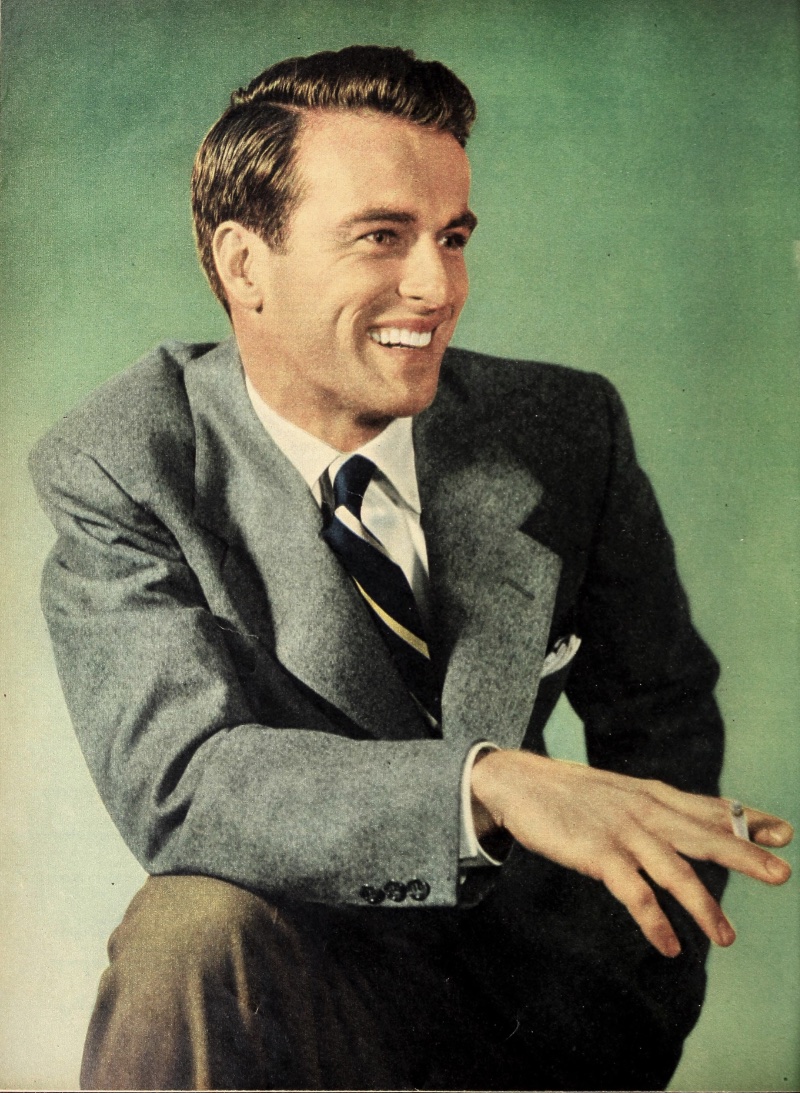
Fashion is intrinsically tied to a period’s socio-cultural climate, and the 1950s was no exception. An air of traditionalism and conservatism initially dominated the style during the post-war era.
This was mainly due to the heightened focus on family values and conformity as people strived to create a sense of normalcy and stability in the wake of World War II. The preferred style for men was formal and polished, embodying the societal expectation of the man as the head of the household and breadwinner.
Suits, ties, and hats were considered daily attire, reflecting a strict professionalism and elegant dress code.
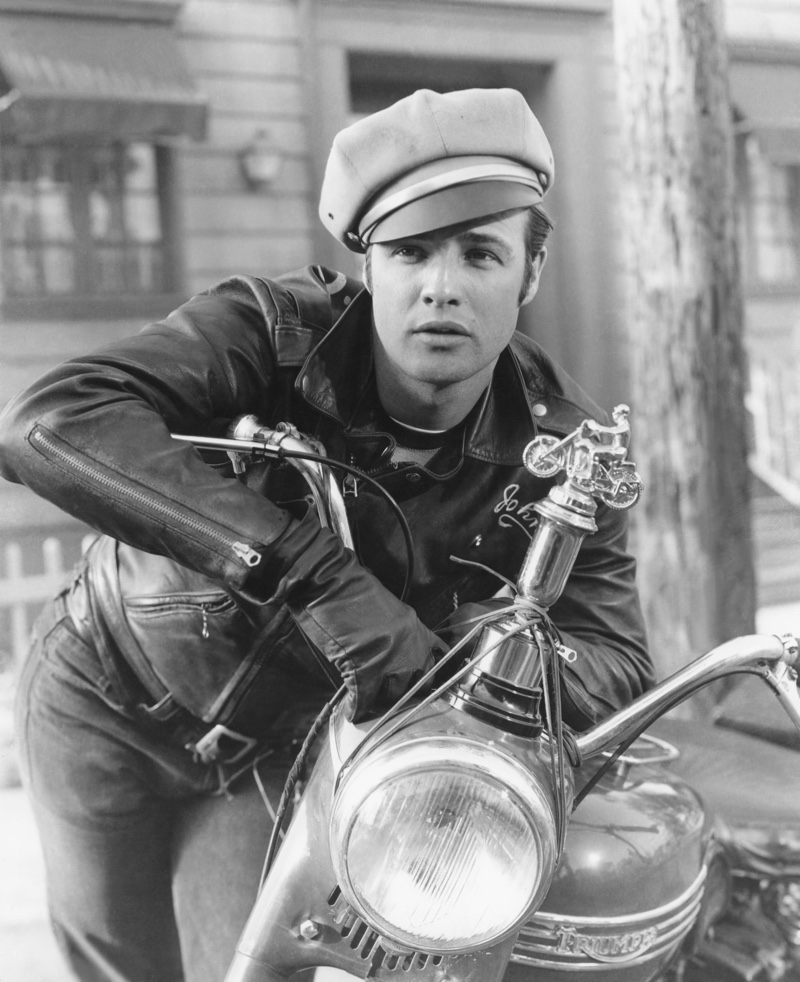
However, as the decade progressed, there was an increasing sense of rebellion and dissent among the youth. The advent of rock and roll, the growing popularity of cinema, and the emergence of cultural icons such as Marlon Brando led to a shift in fashion trends.
The polished, conformist style began to give way to more casual, individualistic clothing. Blue jeans, leather jackets, and T-shirts became symbols of defiance and nonconformity, reflecting a youth culture growing increasingly disillusioned with the societal norms and values of the previous generation.
These styles were not just a fashion statement but a symbol of a growing counterculture that sought to challenge and reshape societal expectations and norms. Thus, the evolution of fashion in the 1950s mirrors the social changes that were occurring.
Vintage Clothing in Today’s Fashion
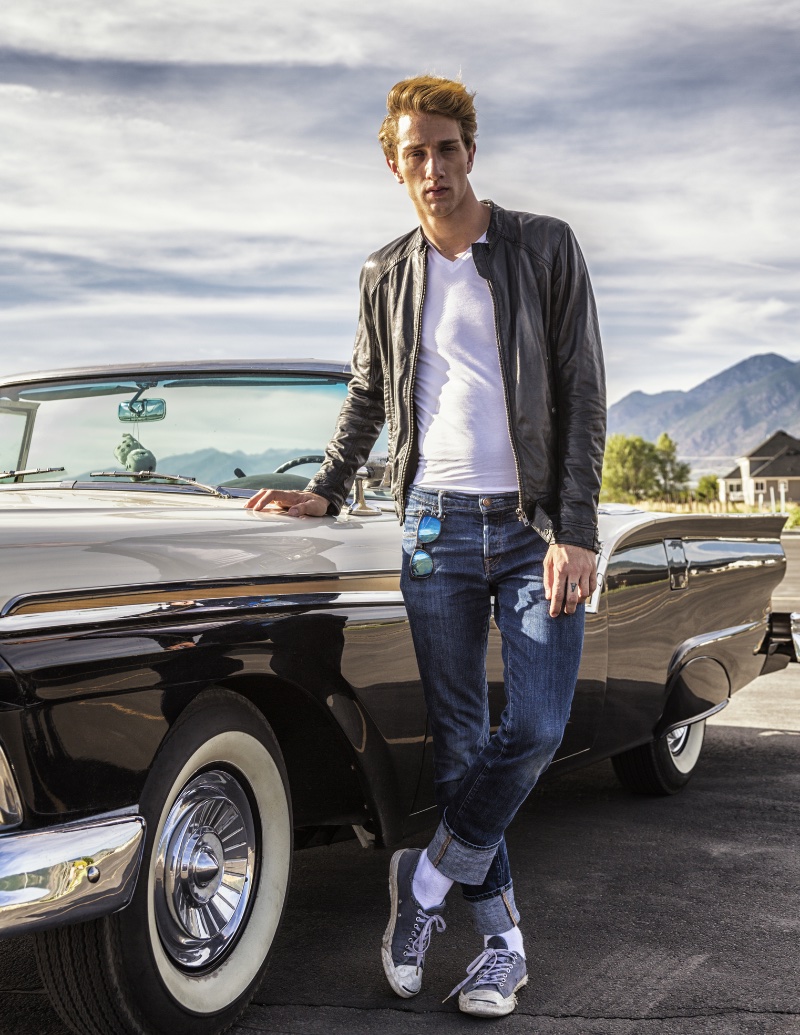
Vintage clothing from the 1950s has experienced a resurgence in popularity. It offers a connection to the past while staying on-trend. Cardigan sweaters, denim jackets, knee-high socks, and short jackets are just a few examples of timeless pieces that have made a comeback.
The charm of vintage lies in its ability to infuse a sense of nostalgia into modern wardrobes. White shirts, dress shirts, and plaid shirts from the ’50s have also found their way back into contemporary fashion.
Their versatility allows endless styling possibilities, whether dressed in suits, jeans, or sneakers. Accessories such as detachable collars, white socks, and straw hats add a touch of vintage flair to any outfit.
Once considered daring, the white suit has boldly returned to the fashion scene. It exudes confidence and style, paired with vibrant accessories and modern twists.
Similarly, navy blue outfits have become a staple in men’s fashion, offering a refined alternative to traditional black attire.
Reflecting on 1950s Style
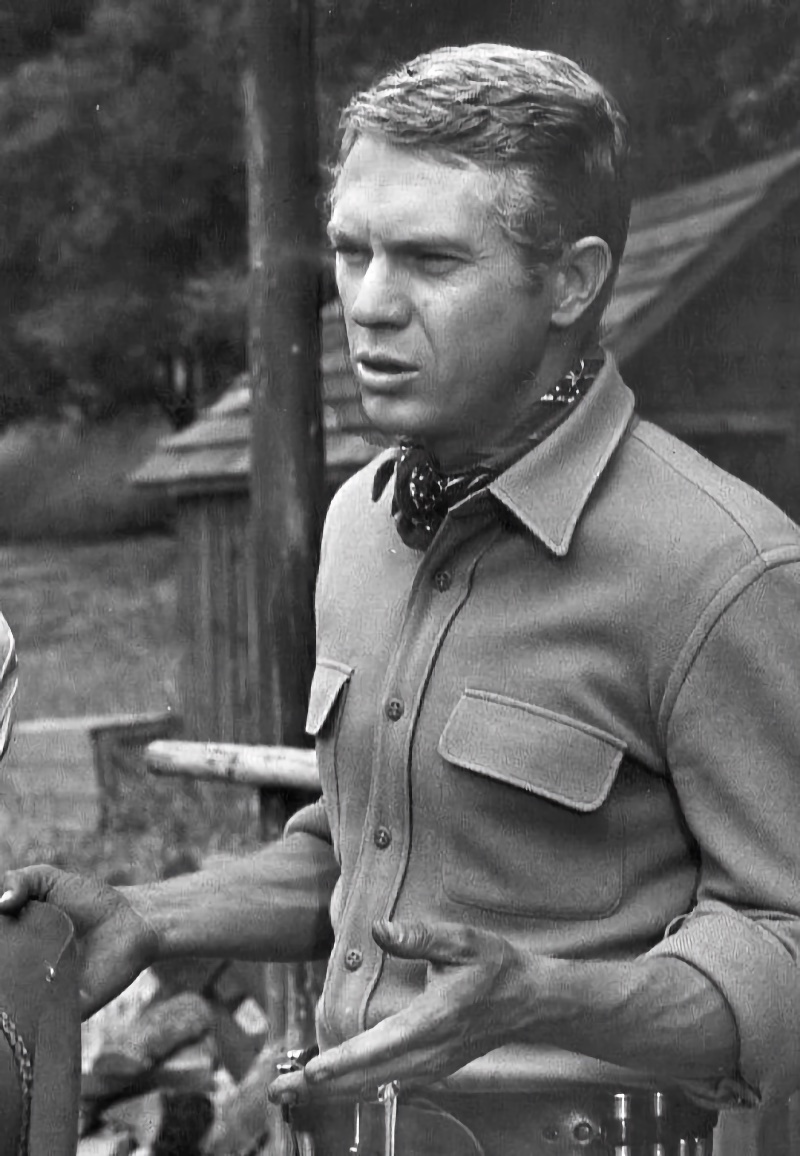
Reflecting upon the profound impact of the 1950s era on men’s fashion, we observe a rich tapestry woven from rebellion, elegance, and shifting societal norms. The nuances of this transformative period—from the emergence of casual wear to the rising influence of cinema and rock and roll music—are distinctly reflected in contemporary trends.
The dawning of the 1960s brought about a further transformation, shaping a new generation of fashion-conscious men. We invite you to explore this progression as we journey into the radical, revolutionary era of 1960s men’s fashion, where the rules of style were rewritten, and an exciting shift towards more flamboyant, eclectic aesthetics began to take root.
